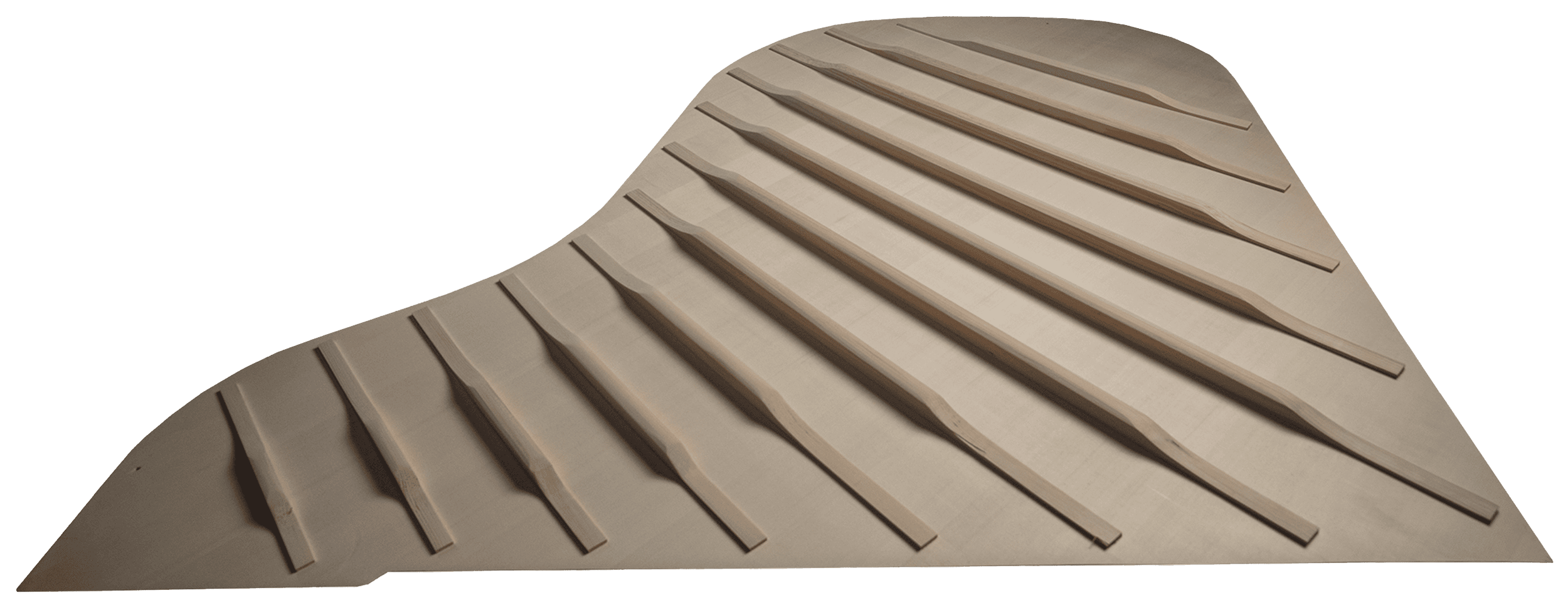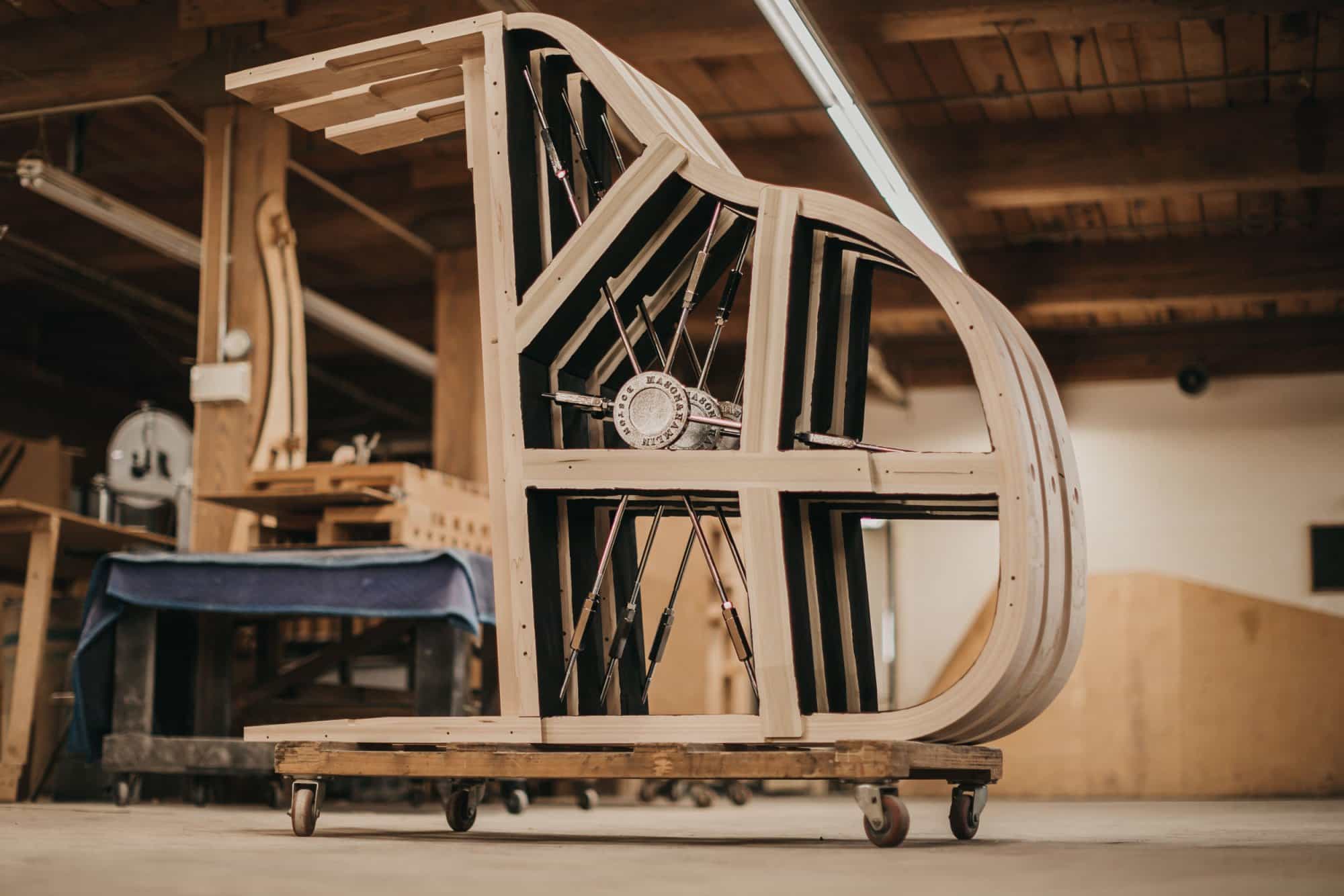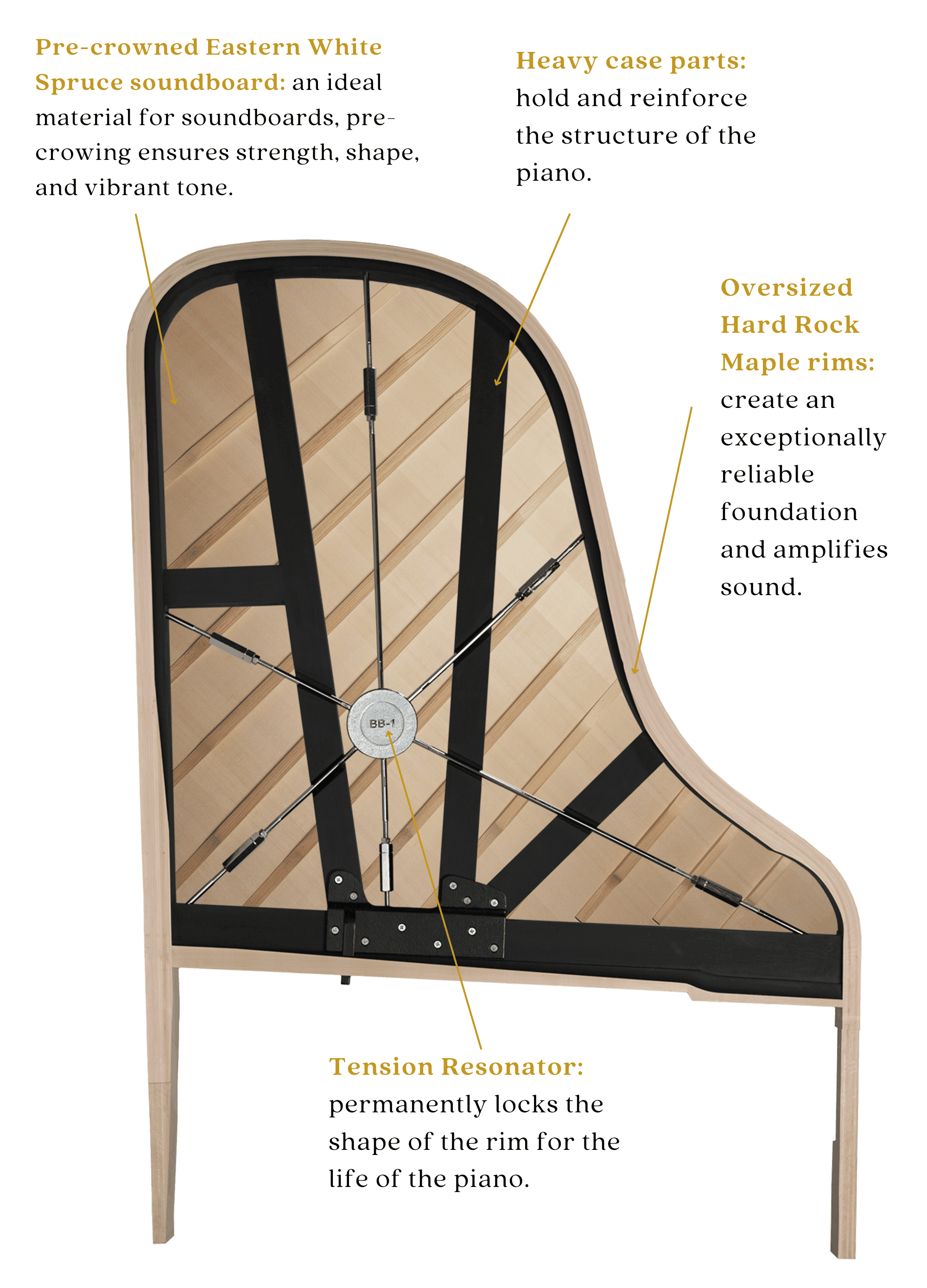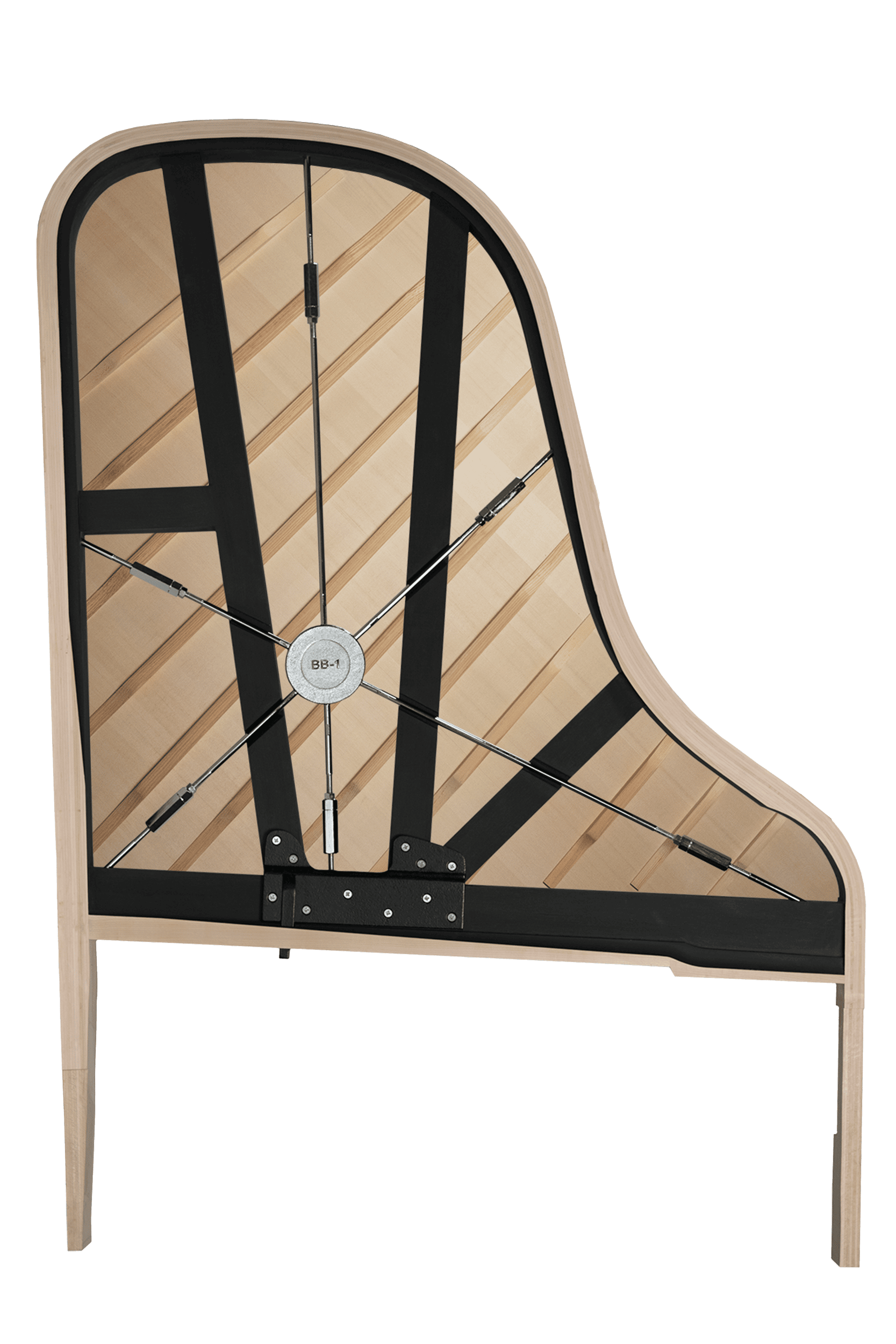Crown Retention System
The Problem:
Most Pianos Age Poorly

The downward pressure placed on a piano’s soundboard is immense. If the piano rim moves even a business card’s thickness, the soundboard will lose its curvature, and the tone and power of the piano will go flat. This is a problem that all pianos face.

The Solution:
Crown Retention System
In 1900, Richard Gertz developed and patented the Crown Retention System, exclusive to Mason & Hamlin, that would permanently preserve the original power and tone of all Mason & Hamlin pianos throughout the life of the piano.
Four Part Structure

How it Works
Outward Forces are exerted as a result of downbearing
Soundboards are made to be slightly bowed in the center to produce sound and tone. As piano strings are tightened to pitch, they push down on the bridge and soundboard, creating a downward force or downbearing which forces the soundboard outward at the rim. By the laws of physics, the outward force at the rim can be up to 8 times greater than the downbearing on the soundboard. In the drawing above, the downbearing is 800 lbs. This means that the outward forces, Force A and Force B, add up to 6400 lbs. pushing against the rim.

The Compressibility of High Quality Spruce
The strength of wood is related to the orientation of the wood grain. The side grain of wood is easily compressed, whereas the end grain of wood is not easily compressed. Mason & Hamlin uses these properties of wood as the basis for the Crown Retention System. Where the soundboard meets the rim, contact is made against the side grain. When downbearing is applied to the soundboard, the higher outward force pushes the soundboard against the rim, compressing that side grain. That compression causes the soundboard to lose crown.

Soundboard Support
The soundboard is supported underneath by spruce ribs, which are crowned the same degree as the soundboard and then glued to the soundboard. These ribs are typically cut so the durable end grain can make contact with the rim. The end grain resists compression so the rib is able to retain its original dimension and crown. The rib is then butted against the rim to support the soundboard.

Structural Strength of the Grand Piano
In a grand piano frame, posts, also called struts, are glued to the rim. Because the glue joint is a butt joint, it is strongest when the forces are pushing inward against the joint. However, the outward forces of the soundboard work against the joint. The rim has a tendency to spread very slightly.

Loss of Crown
A slight spreading of only 1/64” or the thickness of a business card at the rim and/or compression of the soundboard will cause significant or total loss of crown in the soundboard. The only way to correct this condition would be to replace the soundboard. This is a costly and time consuming task.

The Mason & Hamlin
Crown Retention System
Prevents These Problems From Occurring
Heavier and Stronger Structure
Because of its strength and density, hard rock maple is the preferred wood to use in making the rims of a grand piano. Mason & Hamlin uses maple for its inner and outer rims. The inner rims are built to be 50% thicker than industry standards. This extra thickness gives the rims increased resistance to spreading and helps to preserve the crown of the soundboard, as well as giving the piano powerful tone and increased sound projection.
Mason & Hamlin inner rims are up to 50% thicker

Other Company’s
inner rim

The Mason & Hamlin Tension Resonator
The Mason & Hamlin Tension Resonator is a steel truss rod spider that is attached to the inner rim at precisely calculated points, adding strength and rigidity to the rim. The Tension Resonator locks the rim into its permanent shape, resisting the spreading forces of downbearing on the soundboard.

Stronger Soundboard and Ribs
Mason & Hamlin uses white spruce for its soundboards. White spruce provides a higher strength per weight ratio than the more widely used sitka spruce. This gives the white spruce soundboard better resistance to compression.

The inner rim is notched and the ribs are butted against the back of the notch in the rim. The ribs are positioned so the end grain is perpendicular, or square, to the grain of the rim. This grain orientation makes the resulting butt joint as strong as possible. Since butt joints are strongest when force is pushing against the joint, and since the spreading force of downbearing pushes the soundboard and ribs against the rim, the frame becomes extremely rigid. The ribs now support the soundboard and resist compression.
The Result
The spreading forces that result from downbearing are now controlled with thicker solid maple rims and the Tension Resonator. The compressing forces that result from downbearing are now controlled with strong white spruce soundboard supported by spruce ribs with the end grain butted square against a notched inner rim. The result is a piano that maintains its original power and tone, holds its resale value, and lasts for generations: a Mason & Hamlin piano.


